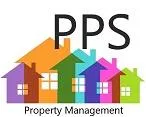Professional Property Management in Blackpool
Expert lettings and maintenance services for local, UK-based, and overseas landlords
Our Core Services
Comprehensive property management solutions tailored to your needs
Property Lettings
Full-service letting management for standard residential properties. We handle tenant finding, screening, contracts, and ongoing management.
Learn MoreProperty Maintenance
24/7 emergency response, planned maintenance, renovations, and compliance. All work completed to the highest standards.
Learn MoreRemote Management
Specialized service for overseas and UK-based landlords. Your boots on the ground in Blackpool, wherever you are in the world.
Learn MoreWhy Choose PPS Property Management?
As a family-run business with deep roots in Blackpool, we understand the local market better than anyone. Whether you're local, based elsewhere in the UK, or managing from overseas, we provide the professional, personal service you deserve.
5-Star Google Rating
Consistently excellent reviews from satisfied landlords
Full Compliance & Certification
Gas safety, EPC, electrical certificates - we handle it all
Rapid Response Times
Tenant placement in days, not weeks. Emergency repairs within hours
Transparent & Fair Pricing
No hidden fees. Deliver what we promise at a fair price
What Our Clients Say
Real reviews from real landlords on Google
Ahmed Ali
"I have used Steve to renovate and repair one of my properties that was left in a state by the last tenant. Steve was very professional, did the work to a very good standard and is responsive. He now manages the rental of that property for me. Steve is currently renovating another of my properties and will be managing that once done. As a distant landlord you want someone you can rely on, delivers what's promised and to a fair price - Steve delivers on all of these. Thanks"
Kim Whitehouse
"Speaking from a Landlord perspective this company ensure a totally stress free experience. Found a tenant in a remarkably short period of time, sorted out all the necessary safety checks and certificates and are helpful, professional, polite and friendly. I would recommend them wholeheartedly."
James Wilson
"Messaged Steve to enquire about a small job of fitting skirting boards. Attended 2 days later and completed the job to a very high standard. Very very happy and would recommend the services. Will definitely be getting them back for more jobs in the future. A+++++"
Ready to Experience Stress-Free Property Management?
Get a free, no-obligation consultation to discuss your property management needs
Get In Touch
Whether you're a local landlord, based elsewhere in the UK, or managing from overseas, we're here to help.
Phone
01253 366081Address
262 Dickson Road
Blackpool, FY1 2JS
United Kingdom
Business Hours
Monday - Friday: 9:00 AM - 5:00 PM
24/7 Emergency Response Available
